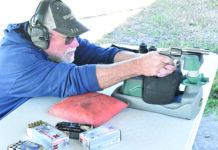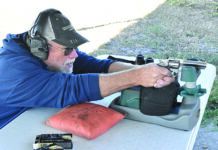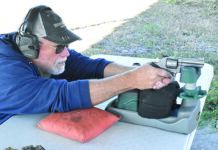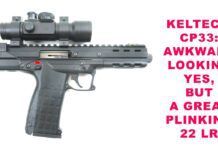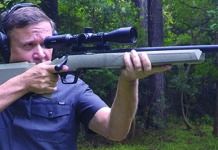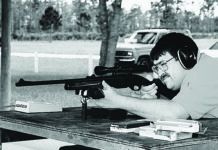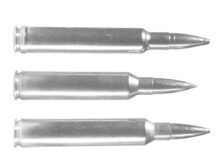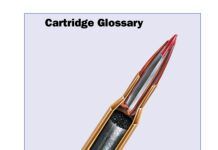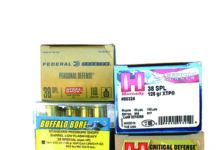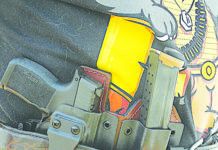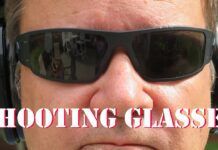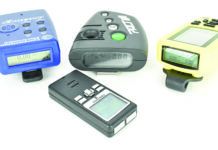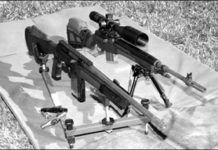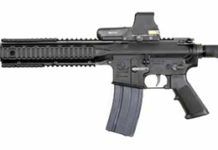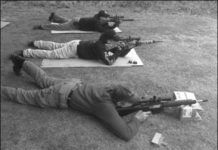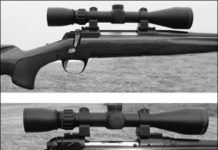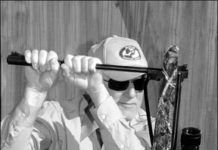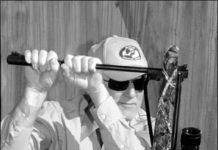American Tactical Imports Adds New Addition to its Line of German Sport Guns
308 Semi-Auto Rifles: FNH-USA, Springfield, Fulton, and DSA
Today's semi-automatic rifle is more accurate and easier to care for than ever before. They're also a lot of fun. The most popular platform continues to be the AR-15, but not everyone is satisfied with chambering 22-caliber ammunition. The fact is that a number of calibers are coming (and going) in an attempt to increase stopping power. In this test we will evaluate four semi-automatic rifles chambered for 308 Winchester. The increase in power is significant, and 308 is a time-tested widely available cartridge. Our test rifles were the $2095 DSA SA58 21-inch Bull Barrel, the $1821 FNH USA FNAR, the $2363 Springfield Armory M1A Loaded, and the $1969 Fulton Armory UPR rifle, an AR-style gun is based on Fulton's Titan II lineup. Each one of our rifles, with the exception of the FNAR, was available with options from a menu of upgrades, so we took advantage of this when we could. The FN rifle does come with modular components to help suit the needs of different shooters.
To test our rifles we visited American Shooting Centers in Houston (www.amShootCenters.com). Our first shots from each rifle were to sight in a Nightforce 5.5-22x50mm NXS scope (www.NightforceOptics.com). We chose the Nightforce scope because of its clarity and versatility. It had a mil-dot reticle with see-through mil-dots plus illumination on demand. Pulling outward on the left-side focus supplied an ideal level of illumination. The reticle remained sharply defined at all times.
Because we would be flipping this one scope from rifle to rifle, we needed a system that offered quick, strong, and precise re-mounting. We could have gone with a quick-release unit, but instead we chose Nightforce rings that attached to the base via a half-inch hex nut. We used a 65-inch-pound Seekonk calibrated torque wrench with T-handle ($98, from www.Brownells.com) to make sure the unit was properly locked into place each time. The repeatable zero of the Nightforce scope made sighting in a simple mechanical chore. Suggested retail prices for the rings and scope were $160 and $1700, respectively.
Once we were sighted in, we recorded five-shot groups from the 100-yard line. Support was provided by Caldwell's new 7 rifle rest ($50, from www.Battenfieldtechnologies.com). This unit was a light skeletal structure that supported the rifle beneath the buttstock and the fore-end. The 7 design left plenty of room for the shooter to assume a natural shooting position with the benefit of additional mechanical support. We also fired with a Caldwell Rock Jr. beneath the fore-end with a beanie bag squeezed beneath the buttstock.
Each of our guns was designed as a battle rifle with available high-capacity magazines, so we didn't always take time to let the guns cool between groups. But we did take note of any difference in performance due to barrel temperature. American Shooting Centers offers target boards set out as far as 600 yards. But long-range shooters must first qualify at the 300-yard line. We decided that we'd pick the best ammunition for each rifle and try shooting them from the 300-yard line prone with bipod attached. With our Nightforce scope turned up to 22X, using a spotting scope proved unnecessary.
Our test ammunition consisted of 168-grain Federal Gold Medal Match boattail hollowpoints and two boattail hollowpoints from Black Hills Ammunition weighing 168 grains and 175 grains, respectively. Over our test period we suffered through heavy winds, which we monitored with a Kestral 4000 Weather Station ($255 from sinclairintl.com). Testing for function, accuracy and versatility from four different platforms, here is what we learned.
Robar SR 90 .308 Winchester
Imbel Sporter Model 444 308 Win.
Easily the best-looking of the trio, the Imbel-receivered FAL looked thoroughly professional with its even, matte-black finish, The first Brazilian FALs were made under contract by FN, but Brazil initiated production on its own, and our test rifle was made in its entirety in Brazil.
The markings on the receiver indicated the maker was Fbrica de Itajub, the government-owned company that is part of the government-owned IMBEL arms complex. The IMBEL logo and name also appeared on the upper receiver.
GunReports.com GunGuide: Rifles Update
Wilson Combat Quad Rail Offers Better Front-End Handling
NRA Competitions Division Staying Busy
AR-10 Shootoff: We Shoot Three Big Brothers of the AR-15
The AR-10 has led an interesting and strange life since its birth in the 1950s. It has never achieved the popularity of the AR-15, even though it was Eugene Stoner's first rifle built on his gas-impingement system. Initially spurned by the U.S. Army for the legendary M-14, the AR-10 was banished to relative exile, occasionally appearing in the hands for small foreign militaries, or in a few cases, the revolutionary. Raul and Fidel Castro were said to have ended up with a few of them, courtesy of a captured Batista government arms shipment. Today we find the AR-10 finally emerging from its diminutive brother's shadow. The shooting community's renewed love affair with all things AR has led to a demand for heavier calibers like the AR-10's 308 Win./7.62 NATO. In fact, one of our test guns, the Mossy Oak-covered Remington R-25 ($1,532), was introduced specifically with the hunter in mind. The other guns in our test are the ArmaLite AR-10T ($2,124), a match-barreled Target model with a 1-MOA guarantee, and the Fulton Armory Titan FAR-308 ($2,058), a gun with a distinct tactical look. The gun consumer's embrace of new shooting technology has forever blurred the distinction between tactical and practical shooting. Whether on a rooftop watching a perpetrator, eyeing a bull's-eye on the shooting line, or a big buck from a deer stand, all have the same basic requirement: the bullet should hit where it's aimed, and stop the target.
Bolt-Action Shootout: X-Bolt Beats Remington and Savage
As the 270 Winchester nears its 80thbirthday, one fact demonstrates its widespread popularity: more than 50 factory loads are available for it—a long-standing record for a non-military cartridge. The Winchester 270 has long been standardized with 1:10 twist-rate barrels, and popular loadings usually utilize 130- to 150-grain projectiles. In this narrow and well-known load range, the 270 Winchester functions with excellence and utility.
Of course, how well the cartridge performs depends on the quality of the gun shooting it, so we went in the search for the best 270 bolt actions, turning to three of the most recognized names in bolt-action rifles today: Browning, with its new X-Bolt centerfire, the revitalized Accu-trigger Savage long action, and Remington's latest version of its long-running 700 series. Our specific test items were:
Browning X-Bolt Medallion No. 035200224, $959; Remington 700 CDL No. 84080, $931; and Savage's 114 Classic, $826.


